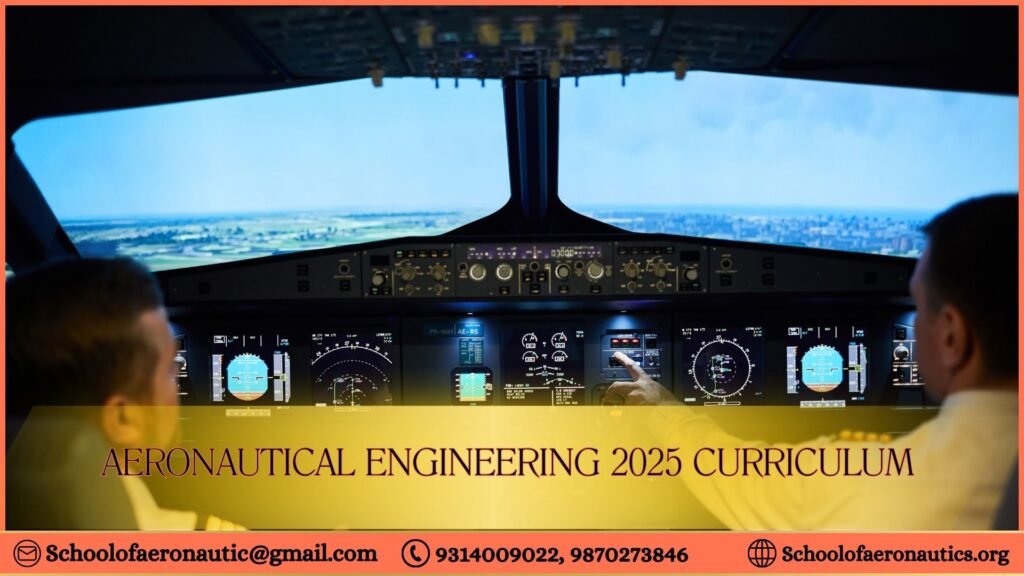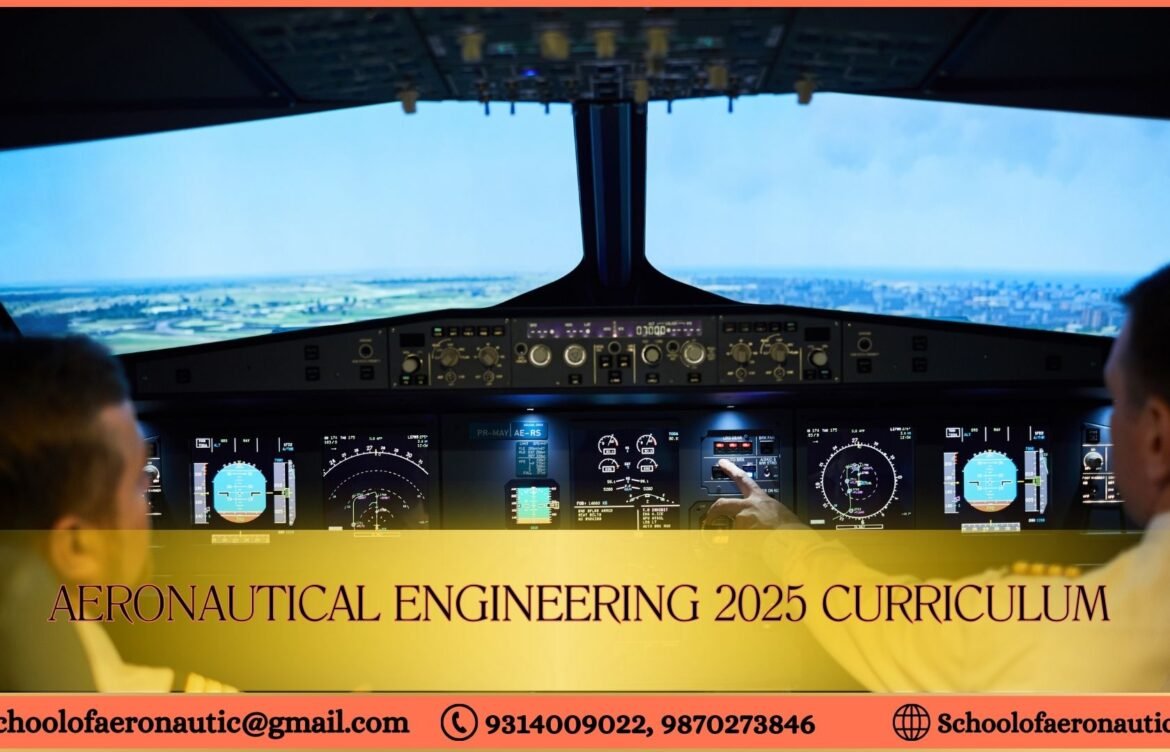Aeronautical Engineering Curriculum Overview for 2025

The aeronautics and aerospace diligence are witnessing significant metamorphoses, driven by technological advancements and environmental enterprises. As a result, aeronautical engineering programs must equip scholars with skills and knowledge that extend beyond traditional subjects.
The Curriculum Overview for 2025 is designed to address these changes by incorporating
Sustainability in Aviation Emphasizing green technologies and eco-friendly practices. Artificial Intelligence( AI) Exploring its operations in independent flight systems and prophetic maintenance. Urban Air Mobility( UAM) Preparing engineers for inventions in air hacks and drone technology. Space Exploration Covering spacecraft design and satellite technology as space tourism and interplanetary operations gain instigation.
Class Overview for 2025
The 2025 class for aeronautical engineering balances traditional engineering fundamentals with slice-edge motifs. Below is a detailed breakdown
Foundational Core Subjects
These subjects establish a strong engineering base, helping scholars understand the principles governing aircraft and aerospace systems.
- Engineering Mathematics: Focuses on calculus, differential equations, and linear algebra.
- Physics of Flight: Covers fundamental concepts like lift, drag, and thrust.
- Mechanics of Materials: Teaches the behavior of materials under stress, crucial for designing aircraft structures.
- Thermodynamics and Heat Transfer: Explores energy systems, essential for propulsion technologies.
Specialized Aeronautical Subjects
These subjects claw into the specialized aspects of aircraft design and operation.
Aerodynamics: The study of tailwind around aircraft, impacting design for effectiveness and performance.
Aircraft Propulsion Systems: Examines sport machines, turboprops, and rising propulsion styles like electric and hydrogen-grounded machines.
Avionics: Focuses on electronic systems, including navigation, communication, and control systems.
Aircraft Structures and Design: Analyzes accouterments, weight distribution, and structural integrity.
Emerging Technologies in Aviation
The class introduces scholars to futuristic generalities and skills.
Sustainable Aviation: Studies in biofuels, electric propulsion, and emigration reduction strategies.
Unmanned Aerial Systems( UAS): Covers drone technology, operations, and regulations.
Artificial Intelligence and Machine Learning: Applications in prophetic maintenance and independent flight operations.
Spacecraft Technology: Basics of satellite systems, rocket propulsion, and interplanetary operations.
Practical Training and Exploration
To ensure real-world readiness, the class emphasizes Work and Simulation trials in wind converts, propulsion systems, and avionics simulators.
externships Collaborations with aerospace companies, airlines, or exploration institutions.
Capstone systems Students break real-world problems, such as developing a UAV prototype or optimizing an eco-friendly propulsion system.
Career openings in Aeronautical Engineering
Graduates of aeronautical engineering programs find themselves in high demand across various sectors. Some of the promising career paths include:-
Aeronautical engineering
Roles: Aircraft design, performance testing, and maintenance.
Employers: Boeing, Airbus, HAL, or private airlines.
Avionics engineers
Focus: Developing and maintaining electronic systems in aircraft.
operations Navigation, radar systems, and flight control.
Aerospace Research Scientist
Area Research in advanced accouterments, propulsion systems, and aerodynamics.
Associations ISRO, NASA, DRDO.
Urban Air Mobility Specialist
Responsibilities: Innovating air taxis and drone systems for urban transport.
Space Systems engineer
openings Designing spacecraft for disquisition, satellite deployment, or space tourism.
skills and Attributes for Success
To exceed in aeronautical engineering, scholars must cultivate a mix of specialized and soft skills:-
Problem-working capacities Addressing complex engineering challenges.
Strong Mathematical Foundations are Essential for simulations and computations.
Rigidity Keeping up with fleetly evolving technologies.
Communication skills uniting with interdisciplinary brigades and conveying ideas effectively.
The 2025 class is designed not only to conduct specialized moxie but also to foster these critical attributes, ensuring that graduates are well-rounded professionals.
Future of Aeronautical Engineering
The field of aeronautical engineering is poised for an innovative future. Arising trends include
Electric and Hybrid Aircraft Reducing reliance on fossil energies.
Hypersonic Travel Enabling briskly- than- sound trips for marketable and military operations.
AI and Big Data in maintenance Enhancing safety and effectiveness by prognosticating element failures.
Space Tourism and Colonization Expanding openings in space systems engineering.
The Curriculum Overview for 2025 prepares scholars to engage with these advancements, icing their applicability in a competitive and fleetly evolving industry.
Conclusion
Aeronautical engineering remains one of the most dynamic and poignant fields of study, offering unequaled openings to contribute to aeronautics and aerospace invention. The Curriculum Overview for 2025 reflects the industry’s future-acquainted line, blending foundational knowledge with slice-edge motifs.
For those aspiring to shape the skies and beyond, pursuing aeronautical engineering provides a pathway to meaningful and transformative careers. As the aeronautics industry continues to embrace sustainability, advanced technologies, and space disquisition, professionals in this field will be at the van of creating history.

